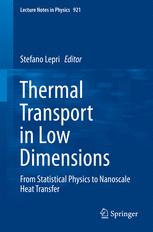

Most ebook files are in PDF format, so you can easily read them using various software such as Foxit Reader or directly on the Google Chrome browser.
Some ebook files are released by publishers in other formats such as .awz, .mobi, .epub, .fb2, etc. You may need to install specific software to read these formats on mobile/PC, such as Calibre.
Please read the tutorial at this link: https://ebookbell.com/faq
We offer FREE conversion to the popular formats you request; however, this may take some time. Therefore, right after payment, please email us, and we will try to provide the service as quickly as possible.
For some exceptional file formats or broken links (if any), please refrain from opening any disputes. Instead, email us first, and we will try to assist within a maximum of 6 hours.
EbookBell Team

5.0
90 reviewsUnderstanding non-equilibrium properties of classical and quantum many-particle systems is one of the goals of contemporary statistical mechanics. Besides its own interest for the theoretical foundations of irreversible thermodynamics(e.g. of the Fourier's law of heat conduction), this topic is also relevant to develop innovative ideas for nanoscale thermal management with possible future applications to nanotechnologies and effective energetic resources.
The first part of the volume (Chapters 1-6) describes the basic models, the phenomenology and the various theoretical approaches to understand heat transport in low-dimensional lattices (1D e 2D). The methods described will include equilibrium and nonequilibrium molecular dynamics simulations, hydrodynamic and kinetic approaches and the solution of stochastic models.
The second part (Chapters 7-10) deals with applications to nano and microscale heat transfer, as for instance phononic transport in carbon-based nanomaterials, including the prominent case of nanotubes and graphene. Possible future developments on heat flow control and thermoelectric energy conversion will be outlined.
This volume aims at being the first step for graduate students and researchers entering the field as well as a reference for the community of scientists that, from different backgrounds (theoretical physics, mathematics, material sciences and engineering), has grown in the recent years around those themes.